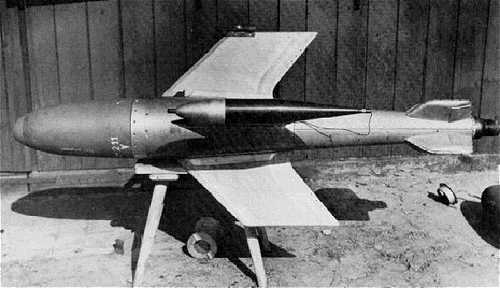
German Forces
The Ruhrstahl X-4
warhistoryonline
The Ruhrstahl Ru 344 X-4 was a wire guided air-to-air missile designed by Germany during World War II. The X-4 did not see operational service and thus was not proven in combat. The X-4 was the basis for the development of experimental, ground-launchedanti-tank missiles that became the basis for considerable post-war work around the world, including the Malkara missile. The first flight test occurred on August 11, 1944 using a Focke-Wulf Fw 190 for the launch platform. Subsequent tests used the Junkers Ju 88 and Messerschmitt Me 262, although they were not launched from the latter. The X-4 had originally been intended for use by single-seat fighters (including the Me 262 and possibly the Dornier Do 335),but the problems in guiding both the missile and the aircraft at the same time proved unworkable. Instead, the X-4 was re-directed to multi-seat aircraft like the Ju 88, while the unguided R4M rocket was to be used in single-seaters. The X-4 was designed to be easily assembled by unskilled labour, and airframe production began in early 1945, incorporating low-cost (non-strategic) materials, such as wood for fins. Production was hampered by Allied bombing of the BMW rocket engine factory at Stargard, though as many as 1,000 X-4s may have been completed. It is possible some X-4s were used in the closing weeks of World War II, although the missile was never officially delivered to the Luftwaffe. The fighter-interceptor designed to use this missile as its primary weapon was the Focke-Wulf Ta 183 Huckebein, which never got out of the project stage. After the war, French engineers tried to develop a domestic version of the X-7, the Nord SS.10. 200 units were manufactured between 1947 and 1950. However, the program was disbanded due to the dangerous pre-flight refuelling involved (the nitric acid and Tonka combination was highly explosive).
5865 Views
5/5/2015
